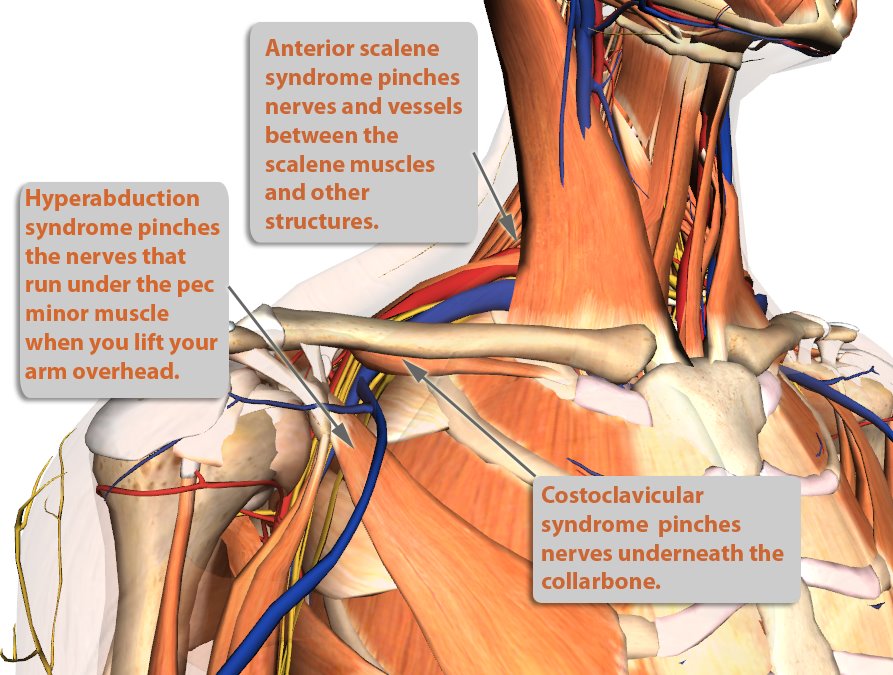Thoracic Outlet Syndrome (TOS)
Eliminating nerve irritation is a major part of my St George UT chiropractic practice. One of the more common nerve complaints, which has been successfully treated using safe, effective chiropractic protocols, is Thoracic Outlet Syndrome, also known as TOS.
As the nerves leave the neck and enter the upper arm, there are a few places where they can be pinched. The pinch can cause dull, vague, achy pain in the upper chest, shoulder, and arms. In addition to pain, there can also be muscle cramps in the forearms. Sometimes TOS pain in the hands can be mistaken for carpal tunnel syndrome. Although TOS and CTS are both examples of nerve compression syndromes, they are very different, and separate treatment plans are needed to resolve each.

Anterior Scalene Pinch
There is a small triangular tunnel between the two scalene muscles, which attach to the first rib and clavicle. If there is a spasm of scalene muscles, this tunnel closes down, choking the nerves.
Costoclavicular Pinch
Blood vessels and nerves from the neck pass under the clavicle (collar bone) and above the first rib. It is a narrow gap and most of the time, there is plenty of room. But if the first rib becomes elevated or if the clavicle does not move freely , a choke point is created. There are several causes for these movement disorders, including asthma, muscle spams, and shoulder problems.
Hyperabduction Pinch
As the nerves and blood vessels pass pass into the arm pit, they pass another pinch point under the front shoulder muscles. As the picture above demonstrates, the pectoralis minor muscle can interfere with the nerve bundle. This pinch tends to occur when the arm is raised. Again, the pain can be felt anywhere along the distribution of the nerve. Frequently, the muscles of the forearm go numb and ache from weakness.
Treatment Options
Innova Pain Clinic treats thoracic outlet syndrome. Our treatment protocols focus on reducing the source of the nerve irritation by restoring proper movement and alignment of the structures. We utilize manipulation of the small joints using gentle techniques, physiotherapy like ultrasound for reducing swelling, and stretching for normalizing muscle tone.



